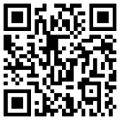Development of Mobile Learning Based Media for Microprocessor Engineering Subject in SMK Negeri 5 Surabaya
Abstract
The purpose of this research is to produce a valid teaching media for microprocessor engineering subject named Mikro-X. Mikro-X can be accessed online either using computer or smartphone. The development of Mikro-X is based on ten step R and D by Borg and Gall. In the experiment step two class is used, X-EDK 1 as experiment class and X-EDK 2 as control class. Mikro-X is used in experiment class while conventional media is used in control class. Two class is compared by their learning outcomes (affective, cognitive, and psychomotor). Mikro-X has validity 4.539 (Likert scale) based on four validator responses. On the experiment stage, students who use Mikro-X have a higher learning outcome (affective, cognitive, and psychomotor) than students who use conventional media.
Full Text:
PDFReferences
Beldarrain, Y. (2006). Distance education trends: Integrating new technologies to foster student interaction and collaboration. Distance Education, 27(2), 139–153.
Borg, W. R., & Gall, M. D. (2003). Educational research an introduction. New York: Longman Publishing.
Campbell, D. T., & Stanley, J. C. (1996). Experimental and quasi-experimental designs for research. Chicago: Rand McNally.
Eschenbrenner, B., & Nah, F. F. H. (2007). Mobile technology in education: uses and benefits. International Journal of Mobile Learning and Organisation, 1(2), 159–183.
Gay, L. R., Mills, G. E., & Airasian, P. W. (2012). Educational research: Competencies for analysis and applications. New Jersey: Pearson Education, Inc.
Kim, S. H., Mims, C., & Holmes, K. P. (2006). An introduction to current trends and benefits of mobile wireless technology use in higher education. AACE Journal, 14(1), 77–100.
Kwon, M., Lee, J. Y., Won, W. Y., Park, J. W., Min, J. A., Hahn, C., … Kim, D. J. (2013). Development and validation of a smartphone addiction scale (SAS). PloS One, 8(2), e56936.
Livingstone, S. (2012). Critical reflections on the benefits of ICT in education. Oxford Review of Education, 38(1), 9–24.
Mok, J. Y., Choi, S. W., Kim, D. J., Choi, J. S., Lee, J., Ahn, H., … Song, W. Y. (2014). Latent class analysis on internet and smartphone addiction in college students. Neuropsychiatric Disease and Treatment, 10, 817.
Nurohman, S., & Suyoso, S. (2013). Pengembangan aplikasi physics mobile learning pada gadget berplatform android guna meningkatkan akses belajar di era digital. Yogyakarta.
Roberts, J., Yaya, L., & Manolis, C. (2014). The invisible addiction: Cell-phone activities and addiction among male and female college students. Journal of Behavioral Addictions, 3(4), 254–265.
Schacter, J. (1999). The impact of education technology on student achievement: What the most current research has to say. Santa Monica: Miken Exchange on Education Technology.
statcounter: GlobalStats. (2017a). Operating System Market Share Indonesia: Feb 2016-Feb 2017. Retrieved November 21, 2017, from http://gs.statcounter.com/os-market-share/all/indonesia/#monthly-201602-201702
statcounter: GlobalStats. (2017b). Operating System Market Share Worldwide: Feb 2016-Feb 2017. Retrieved November 16, 2017, from http://gs.statcounter.com/os-market-share#monthly-201602-201702
DOI: http://dx.doi.org/10.17977/um010v1i12018p001
Refbacks
- There are currently no refbacks.
 | Letters in Information Technology Education (LITE) |

1.png)
1.png)
1.png)
4.png)
1.png)
.png)

3.png)
1.png)
1.png)
